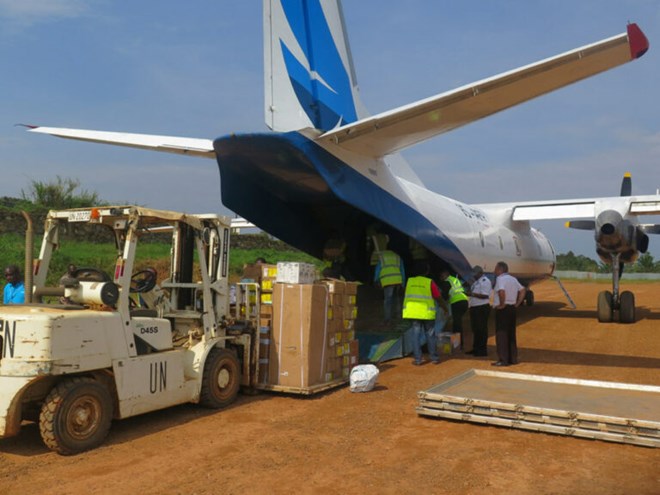
Wednesday June 29, 2022
By Guy Martin

One of the largest acquisitions of services by the United Nations is for air transport, and South African companies are being urged to bid for these contracts as local companies have the necessary capabilities and experience.
This is one of the outcomes that emerged from the United Nations Procurement Summit hosted at the CSIR in Pretoria last Friday, where senior UN officials unpacked UN procurement processes and requirements.
In 2021, the UN Secretariat spent nearly $3 billion on procurement, with the largest single item ICT ($418 million), followed closely by air transport ($394 million), with building and construction coming in third at $331 million. Fuels, including aviation fuel, was number five at $234 million.
In 2021, 14.5% of all UN Secretariat spend was on aviation contracts. As spend was impacted by the Covid-19 pandemic, the UN pointed out that aviation is usually the number one spend category, as was the case in 2019, when the Secretariat spent $478 million on air transport, followed by ICT at $418 million, and fuels at $372 million.
Commercial aviation expenditure dropped slightly during the pandemic, but is on the rise again. For example, commercial aviation spend was $461 million in 2018, $478 million in 2019, $371 million in 2020, and $394 million in 2021.
On average, annual expenditure for long term air charter services amounts to 70% of all aviation spend.
There are five main pillars of the UN’s aviation procurement: long term air charter for the transportation of cargo and passengers in mission areas; aeromedical evacuation; long term air charter agreements for the strategic movement of troops in and out of missions; ad hoc/VIP requirements; and intelligence, surveillance and reconnaissance (ISR).
As of June 2022, the UN had 173 fixed and rotary wing aircraft on commercial contracts and military letters of assistance around the world. This is as follows: MINURSO in Western Sahara (5); UNSMIL in Libya (1); UNFICYP in Cyprus (3); UNIFIL in Lebanon (7); UNAMI in Iraq (2); UNAMA in Afghanistan (2); UNMHA in Yemen (2); UNITAMS in Sudan (3); UNSOS in Somalia (23); UNISFA in Abyei (11); UNMISS in South Sudan (26); MONUSCO in the DRC (41); MINSUCA in the CAR (21); UNOWAS in Senegal (1); UNVMC in Colombia (2); and MINUSMA in Mali (49). Of these missions, MINUSMA, MONUSCO and MINUSCA operate a combined 26 unmanned aerial vehicles, including Aladdin, Luna, Heron I, Orbiter 2/3 and Falco Evo aircraft.
The majority (67%) of UN aerial assets are rotary wing, with 20% fixed wing and 13% unmanned. Rotary wing assets include Bell 212, CH-146/147, MD500, Mi-17, Mi-24, Mi-26, Mi-8, Oryx, Puma and Rooivalk helicopters. Fixed wing aircraft range from large to small, and include C-130/L-300 Hercules, Saab 340s, Il-76s, Beech 1900s, ATR 72, An-26s and others.
Procurement Assistant Jean Murphy and Remy Raul, Procurement Officer with the aviation division of the UN’s Procurement Division, told Summit attendees that the UN is shifting from guaranteed air ambulance contracts to more on-call (not dedicated) requirements and is also shifting to standby/not guaranteed contracts for ad hoc passenger transport. It expects to issue more ISR requirements in the coming few months.
Current opportunities include multiple solicitations for mission air assets; requests for proposals (RFPs) for UAVs and ISR services, with upcoming opportunities including fixed and rotary wing services in support of UN peacekeeping operations; fixed and rotary wing services in support of UNITAMS in Sudan; global strategic troop movement flights; regular heavy cargo flights for UNMISS and MONUSCO, and ISR services for multiple missions.